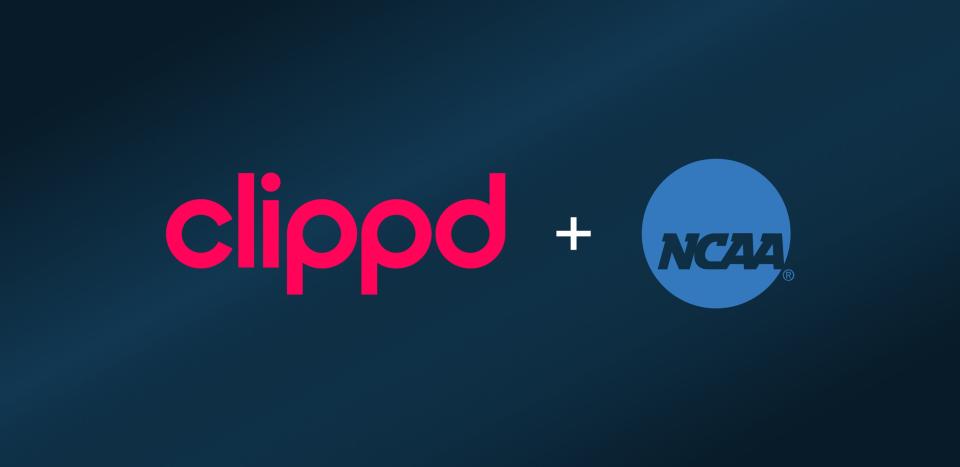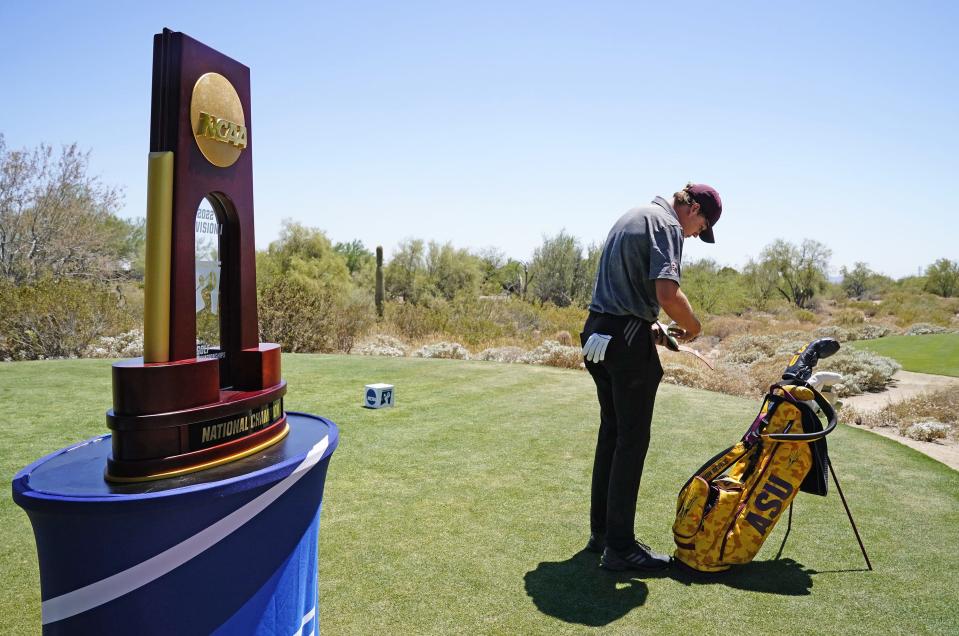‘Change is hard’: What to know about Clippd, Spikemark’s failures and future of college golf scoring and rankings

The start of the 2023-24 college golf season has been tumultuous, to say the least.
On Monday, Oct. 16, the NCAA announced Clippd, a technology business founded and staffed by passionate golfers, would take over as the official scoring and rankings provider for college golf. This comes on the heels of numerous failures from Spikemark Golf, which replaced Golfstat in July and was supposed to provide tournament scoring, real-time leaderboards, detailed statistics, in-depth analytics and media, allowing fans to keep track of their favorite teams and players.
However, from day one, Spikemark’s website encountered numerous issues, there have been no official college golf rankings with the fall season nearing completion and plenty of questions remain from coaches and those involved with the inter-workings of the sport about the future.
Here’s what you need to know about Clippd, Spikemark’s failures and the future of college golf scoring and rankings.
Why did Spikemark fail?

On July 10, the NCAA announced Spikemark Golf would become the provider for all golf scoring and ranking services utilized by the NCAA, beginning with the 2023-24 season.
Not even four months later, Spikemark was Clippd, and its future in the sport is unclear.
Spikemark, created and founded by former collegiate player and coach, Derek Freeman, got the contract with the NCAA in part from its pitch to have an up-to-date website and mobile app that were designed to meet the needs of collegiate golf at every level.
Spikemark Golf LLC came to be Jan. 9, 2020, in Wyoming. That’s when the business filing was made. Freeman was the head men’s golf coach at UCLA and served on the NCAA Division I Golf Committee, a position he held from 2018 until his retirement in 2022. Freeman told Golf Channel he fielded numerous calls from coaches complaining about Golfstat rankings and a perceived lack of transparency, or lack of understanding, how Golfstat’s formula worked.
That enticed Freeman to pursue change. Hence Spikemark.
Perhaps the biggest change from the old system was Freeman working with Mark Broadie, the guy who created the strokes-gained system and helped revamp the Official World Golf Ranking. Freeman wanted Broadie to develop a specialized ranking for college teams and players.
Spikemark planned to use a points-based ranking, which would be different than the head-to-head and stroke-differential rankings Golfstat (and the Golfweek/Sagarin rankings) use. Freeman also wanted an updated look on the website, with an emphasis on team logos to provide a more aesthetically pleasing look compared to Golfstat.
The NCAA has a request for proposal (RFP) process for contracts with outside vendors, including scoring and ranking services. Golfstat had been working on a one-year contract for the 2022-23 season, and Spikemark’s proposal was strong enough to land the contract.
Strong enough that the NCAA overlooked how Spikemark hadn’t done live scoring for one event, and its rankings method hadn’t been implemented anywhere. There was no proof the website worked, but the dotted line was signed, and Spikemark had a multi-year contract.
However, from the opening day, problems were apparent.
Coaches were sent scrambling when the live scoring wasn’t working for their athletes. Spikemark had an app available for iPhones but nothing for Android users, meaning certain players couldn’t input scores. The website, when it would load, took what seemed like an eternity, and even then the validity of the scores couldn’t be proven.
The website then crashed.
Freeman sent an email to coaches Sept. 1 saying, “Even though we had tested the system rigorously multiple times, as with any new platform and application that deals with user input, once used in the ‘real world,’ weaknesses were quickly exposed. Our development team is working around the clock to repair and address all of these issues.”

The following day, the website was completely down. The message “ground under repair as we carry out essential maintenance” was shown to those who tried to visit the page. On Sept. 4, Spikemark’s posted on social media that its website experienced a cyber attack. To date, it’s the last post from the company.
There were more emails from Freeman to college coaches, and the NCAA even chimed in, apologizing for the inconvenience. The NCAA said it anticipated some bumps with the new software.
The damage was irreparable.
Freeman didn’t respond to Golfweek when asked for comment.
Clippd picking up the pieces, starting from scratch

On Clippd’s homepage, scroll a bit and you’ll see a screen littered with college golf logos.
Wake Forest, Florida State, Georgia Tech, Yale, Kentucky, Washington. There are dozens more. A bit further down, there are testimonials from Georgia Tech men’s coach Bruce Heppler, Central Florida women’s coach Emily Marron and Wake Forest women’s associate head coach Ryan Potter about how great Clippd is for their programs.
But Clippd was never a scoring site. Until now.
Its listed purpose is “to connect rich data from multiple sources into a single platform, providing players and coaches with powerful insights to drive improvement, engagement and enjoyment of the game.” Its mission? “To help players to truly understand their game and make better decisions about how to play, practice and improve.” Its vision? “A connected sport that is open, inclusive and progressive, where everyone has equal access to the tools and knowledge to get the most from the game they love.”
“Our aim is to work with golf’s technology firms and governing bodies to deliver you the maximum benefit from the golf data that’s now so easy to generate. To that task we bring advanced data science, machine learning and AI, as well as an unlimited love for the game.”
Now, Clippd is the NCAA’s official scoring provider for all levels of college golf. And it’s starting from scratch.
“We’d been invited to the early stage of the RFP process by the NCAA,” Piers Parnell, CEO of Clippd, told Golfweek. “I asked a lot of questions in those first few calls. I think that the point really is that there’s no underestimating how significant a technical challenge it is to deliver what college golf truly needs and deserves from a technical point of view, from a digital and experiential point of view. And so, you know, ultimately, on the basis of those initial meetings and where things were heading, we felt there was a bit of a mismatch in that understanding.
“Which obviously has now been corrected. Live scoring is another beats altogether, and it needs to be done properly. That’s our intent is to systematically go through a process where we collaboratively work with the community to get live scoring and data in the best possible way to create the right experience.”
Freeman initially reached out to Clippd on Sept. 1 seeking expertise. Parnell and a few partners got on a call with Freeman and tried to help him in the college golf community.
“Our primary goal was to introduce the most updated technology platform for collegiate golf,” Freeman said in the release announcing the switch to Clippd. “The complexities, including all divisions, formats, etc., proved more difficult than we ever could have anticipated. We made the decision to reach out to Clippd, a leading technology provider in the golf community, to assist us through our challenges.”
The NCAA had nothing to do with Spikemark reaching out to Clippd, Mark Bedics, the NCAA associate director of championships and alliances, told Golfweek. Eventually, the two companies approached the NCAA about Clippd taking over, and the NCAA agreed.
Clippd’s team went to work on rebuilding and relaunching the Spikemark website and mobile app, both of which have been live since September 27. With Clippd’s data platform as the main power source, the performance and reliability of both products have improved significantly.

To date, around 75 percent of all Div. I golf tournaments completed in the 2023-24 season have been published, and the remainder of Div. I, II and III are being added daily, the release stated.
However, there are still questions as to how a company that has never done live scoring was yet again awarded a contract to do just that.
“We could not be more focused in our desire to instill, reinstill some confidence in the college golf community,” Parnell said. “We have to do this properly. College golf needs it to be done properly. It is technically challenging.
“We will follow the best possible procedure as it relates to building this out so that it’ll be right, but it will be robust, it will be reliable, and ultimately it will knit together all of the various different elements of college golf.”
Clippd is working on building a website separate from its current one to host the college golf scoring and rankings. Parnell said his team of nearly 40 is working around the clock to input scores from the fall, build the website and take into account all of the different facets that come with live scoring.
Additionally, the NCAA, in consultation with its coaching community, will publish the first edition of Broadie’s new college rankings shortly after the end of the fall season, per the announcement.
“Derek had initially asked us to assess what had been built because he understood from our programs that we had pretty high degree of technical capability as well as understanding of what what what college golf actually looks like,” Parnell said. “Like it’s pretty complicated when you think about all the various different types of tournaments. In making that assessment, the reality is that what he had built for him with his tech partner was not, you know, it wasn’t architected the right way. It wasn’t designed the right way. It was never going to work.
“Our objective was to help Derek, help Spikemark and help college golf. Going forward. It will be a completely different tech that runs college golf.”
That’s why Parnell and his staff are working every day to make sure all of the data inputted into the system is correct and accurate, so when Broadie’s initial rankings come out, those are correct and accurate, too.
“We want the fans to families, student-athletes, the programs, the donors and everyone else to actually have something that’s really comprehensive,” Parnell said. “How long that will take? We’re working around the clock to make sure we get things ready and done and dusted.
“There’s a huge opportunity here for collectively as to really enrich the experience end to end. It’s about the athletes. It’s about the coaches. It’s about the families and it’s about the fans. It’s also about the programs and how they run. Particularly as you go up and down the various divisions, resources are different, sure, but they still deserve to have a great experience. That’s what we’re all about.”
When the transition period from Spikemark to Clippd is complete, there will be no mention of Spikemark anywhere in the college golf space, and Freeman isn’t going to be involved.

The issues Spikemark created are why Clippd has committed nearly its entire force to fixing college golf scoring in the short term. There will likely be bumps along the way, but the foundation is there and resources are there for it to be successful now and into the future.
“We just believe, done properly, there is an enormous opportunity for college golf to be elevated through the right digital experience,” Parnell said, “and that has to be an end-to-end thing. Frankly, college golf has sat kind of still for the better part of 30 years. And if we can really bring our expertise and our passion to bear on making that an infinitely better experience, then that’s what gets me excited and that’s what gets the whole team excited.
“We just have to get to stability. We have to get people to understand that this is really, while exciting, it’s a complex, technical beast.”
What about the NCAA? 'Change is hard'

The last thing the NCAA wanted to deal with was Spikemark’s debacle.
However, in a tumultuous time in college golf, the decision to switch away from Golfstat made people question the NCAA’s choice to do so even more.
Not only did the scoring provider change, but also the way rankings were done. In turn, that new system, the Mark Broadie ranking system, would mean different selection criteria for teams looking to earn NCAA Regional bids. It would also mean teams and coaches would have to schedule differently to account for the new criteria.
As the end of the fall season nears and there’s still no ranking, more questions remain than answers.
“I’ll start by saying change is hard, right, and it’s harder for some people than it is others,” Bedics said. “To be able to partner with somebody who’s recognized in the golf circles as literally the person for golf analytics, from our standpoint, was kind of a home run.”
Bedics said the NCAA ran numerous simulations with past data using the Broadie ranking system, and the results weren’t drastically different from Golfstat’s rankings with the same data.
Another point Bedics mentioned was transparency with the rankings.
“There will be 100 percent transparency with where teams are ranked and why they’re ranked, which is definitely something that we’ve heard for years and years and years about.”

When asked about Clippd having no experience doing college rankings or scoring, Bedics again mentioned change is hard.
“To expect things to be 100 percent perfect is ridiculous,” he said, “That being said, our confidence in their abilities is extremely high.”
Bedics said the NCAA believes Clippd will be a formidable ally because of its resources and backing.
“We’re super excited about this partnership… and we know they’ll get it done.”
Bedics, who primarily works with the Women’s Golf Coaches Association, said there has been a mixed reaction to the news. He mentioned there are coaches who are all in, others who are on the fence and some who have “no trust, no faith.”
“Not everybody is going to be happy,” Bedics said. “I know that. Even if this is the best thing if this comes out and is the most amazing thing of all time and people are like, ‘this is crazy. this is awesome,’ there’s clearly going to be some people like who are still upset and bitter because again, change is hard.”
As far as future schedules, Bedics said once the rankings come out, it will hopefully take away some of the nervousness and trepidation because they won’t be that different from what coaches build schedules off currently.
However, there remains some skepticism on how using a ranking based for individuals will fare for a team sport.
“Change is hard.”
Why not go back to Golfstat?

Golfstat started in 1984. Founder Mark Laesch wrote a program to keep his own golf stats. Soon after, he began doing stats for Illinois State, his first client. The following season, Laesch sent out about a hundred letters to schools across the country. Only Oklahoma State responded, but the rest is history.
In 1989, Golfstat started a partnership with the NCAA after the association’s previous women’s rankings partner gave them trouble. Three years later, Golfstat was the official rankings provider for the men as well.
For 30-plus years, Golfstat’s rankings were used by the NCAA golf committees to determine the fields for NCAA regionals.
When Spikemark was awarded the RFP, Golfstat was blindsided. The NCAA informed Golfstat of its decision shortly before the Women’s Golf Championship in May.
Shortly after the NCAA announced Spikemark as its new partner, Golfstat had layoffs.
“The NCAA’s decision to no longer utilize Golfstat as the official scoring and rankings service will be a huge change for all,” Golfstat president Kathy Laesch said in July. “Please do know that we did our best effort to present a comprehensive outline for the future of Golfstat, what changes we had already made, and the many reasons we’ve been able to service ALL of college golf for so long. As we move forward, we will continue to pursue our passion and purpose to support college golf.

“We will still be offering live scoring for events that choose to utilize the service at an affordable price that you are accustomed to. Along with this, we will make sure to find a solution with the new scoring platform to make sure those scores are submitted in a timely manner. Thank you to those that have already reached out with their intentions to use Golfstat live scoring this 23-24 season.”
With the Spikemark issues, many college golf events this fall have been on Golfstat. The live scoring has worked effortlessly, even with the company’s scaled-back approach. However, the website is different from the past.
There is no page with schedules from every division, nor are there any rankings posted. This fall, the only rankings available have been the Golfweek/Sagarin rankings.
Ultimately, that has left numerous folks to question why Golfstat couldn’t resume live scoring again for the NCAA. In some ways, Golfstat and other live-scoring platforms saved Spikemark this fall by being able to provide scoring in the first place.
Additionally, the layoffs at Golfstat would ultimately make doing what the company did in the past nearly impossible, considering all the additional responsibilities that go into being the NCAA’s partner for live scoring and rankings and not just hosting tournaments.
While Golfstat may still be present in college golf, its role this season and in the near future won’t be what it once was.
Looking forward

Spikemark is gone. Clippd is in. Golfstat is still around.
Clippd has a challenging task ahead, but Parnell and his staff are committed to making the scoring and ranking platform for NCAA golf the best it can be. There’s also a dedicated staff, not a couple individuals, working to ensure that happens.
There remains plenty of skepticism among the college golf community regarding the future of the sport, but with Spikemark’s exit, Clippd’s entrance and the spring season creeping ever closer, there’s also plenty of reason for optimism.
If Clippd can save the day and come through on its goals, it would right the ship on what’s been a wayward start to the fall.

 Yahoo Sport
Yahoo Sport 






































